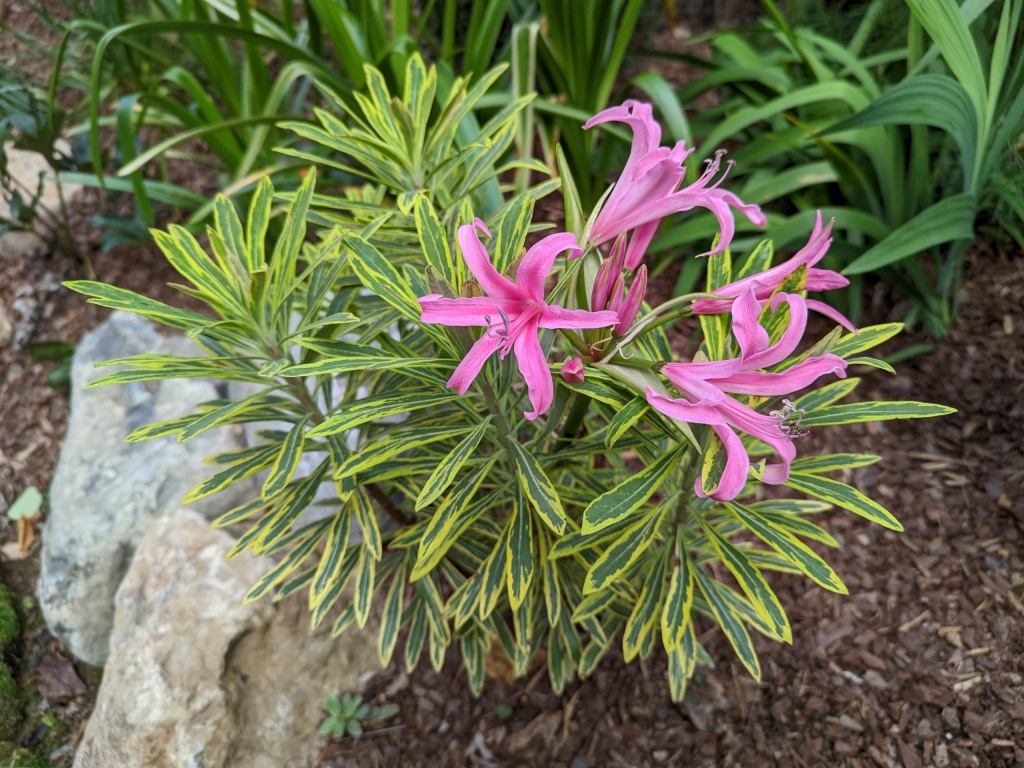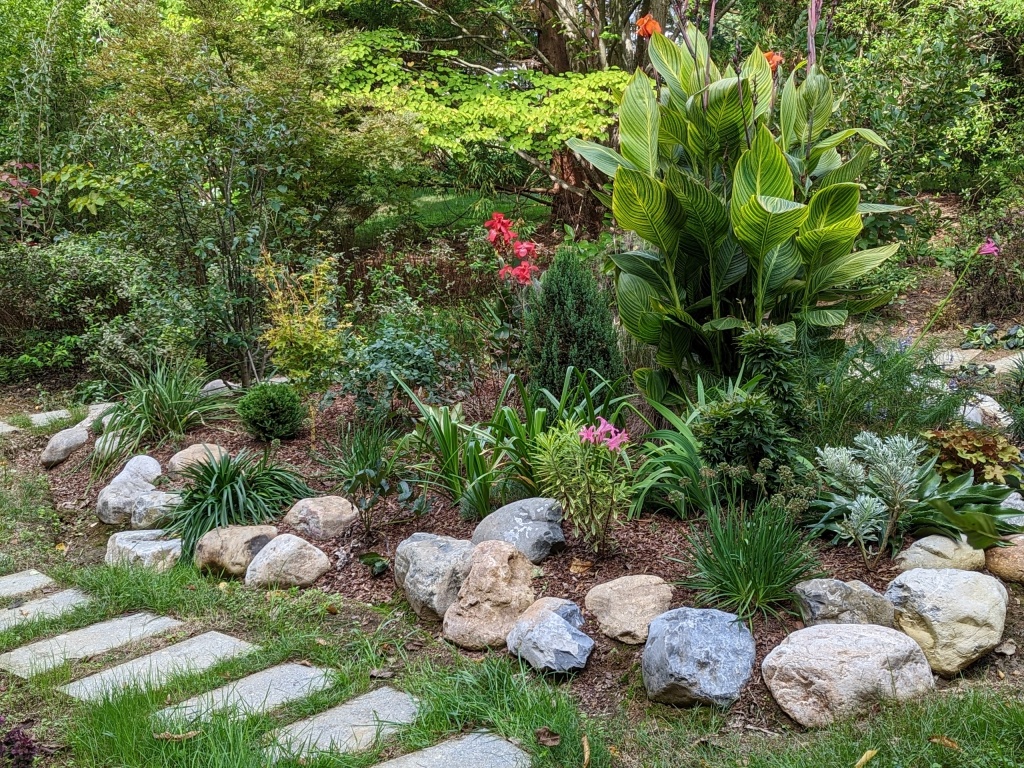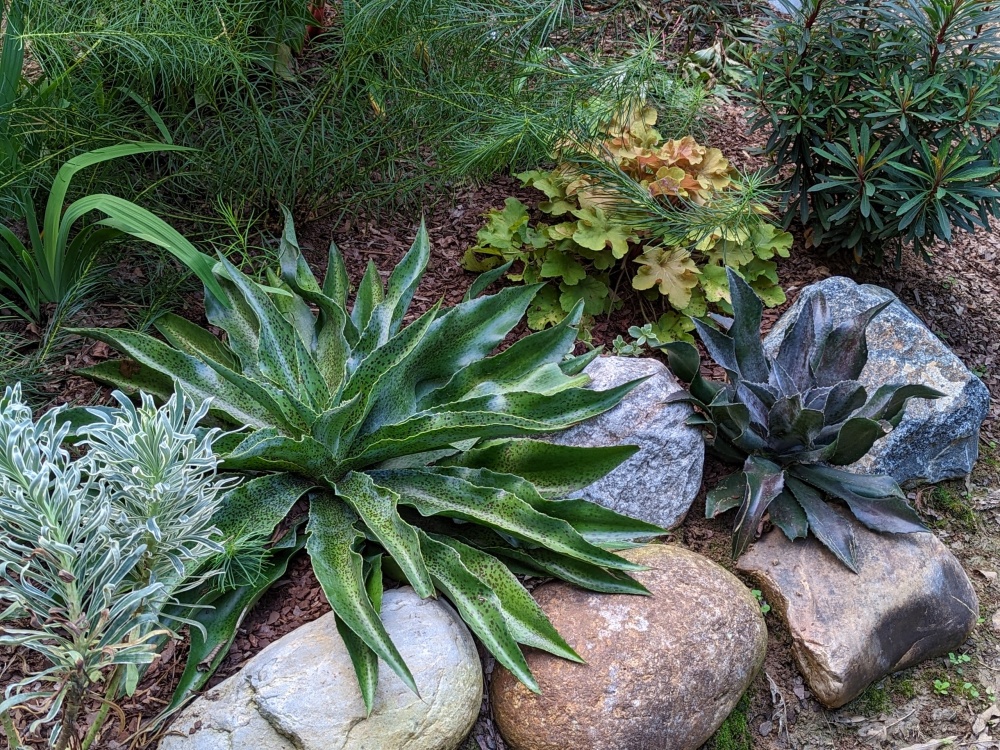A year ago, the small area of lawn in the lower, rear garden was a mess, just as it had been for the past decade. Twenty years ago, before the kids moved on this lawn was our ballfield, then our badminton court. The grass was well worn from use, but then the property developer dug a retention pond just behind our lot, the water table was raised and it turned to become a too often soggy and weedy mess.
The garden along the edges suffered also, and a few long established evergreens and a tall witch hazel were lost in a year when rainfall almost doubled. The replanting took some time to figure what would grow in this occasionally swampy ground, but the small lawn became an increasing irritation.

My wife repeatedly cautions that not another inch of lawn be removed (to limit my sometimes impetuous new plantings), so this was a temporary stumbling block to removing the horrible, nutgrass-filled lawn. But, finally I had enough. On a late autumn afternoon the lawn was dug out and mounded. Deep edges were dug to direct rainfall to the dirt bottomed, wet weather pond at the rear property line. The next day small boulders were brought in to support the newly mounded planting area, and then shredded leaves topped off the mounded sod to minimize weeds through the winter.

I don’t recall the exact timing, but first in early spring a ‘Persian Spire’ parrotia, then a Japanese Umbrella pine were transplanted into the low mound. Neither were doing well where they were, and while the pine was moved again in recent weeks (it would grow too large to overwhelm other goodies that have been planted), the parrotia is perfectly suited to this sunnier, drier location.

Happily, the low mound has proven to be dry enough for euphorbias, though a few alpines failed in rock crevices as I miscalculated the amount of grit necessary to add to the soil to increase drainage. The mangaves (above) tucked between rocks are not cold hardy, but they’ve grown splendidly, so they’ll be dug and stored in the greenhouse for the winter. The spines of mangaves are quite soft, looking vicious but are far less dangerous than agaves, though two are suffering that deer have taken a liking to.

In recent days a new project has begun to create a raised, gravel filled rock garden along the sunnier edge (above) of this area. Grass (weeds) has been dug, and matching small boulders will be set tightly, with narrow, gravel filled gaps for planting. Several plants that prefer exceptional drainage will be moved and several others ordered to get a start that, like other planting projects, will likely develop over years.
I really like the color combination of your nerine and euphorbia in the first picture. Keep it!
Since my eye doesn’t see clashes in color I assume any stark contrasts are excessive, but I’m happy with it.
Hey Dave, it would be neat to see a series of before and after pictures of that boulder lined bed. I’m sure it would be cool to see those before and after pictures of any part of your garden. Thanks.
Another group of plants for the rock garden will arrive next week. I’ll post a follow up, but everything will be very small from the start.
Your “work in progress” photos are always extremely helpful!
The garden has been a work in progress for thirty – three years. Digging and planting new areas is the most enjoyable part of gardening.